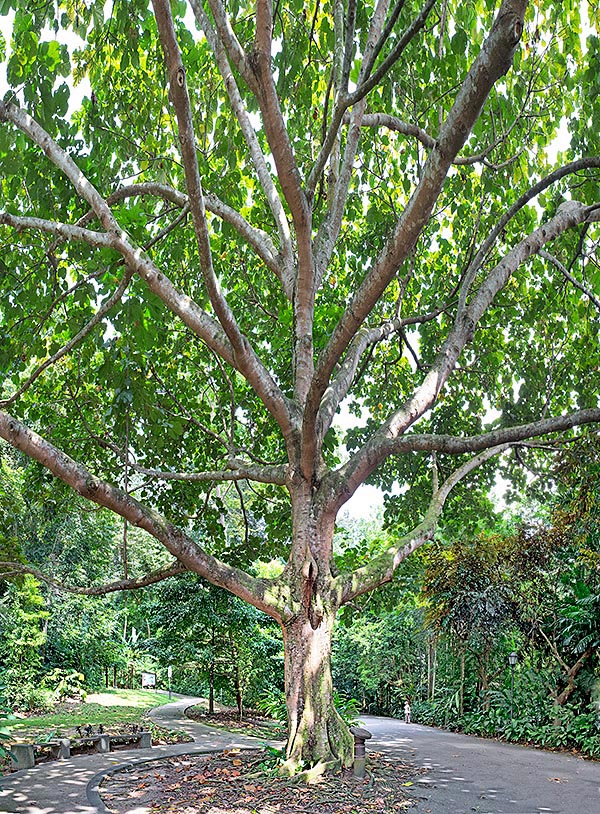Family : Malvaceae

Text © Pietro Puccio

English translation by Mario Beltramini

Who would have thought? This huge Cola gigantea that can reach 50 m is a tropical relative to Malva sylvestris and like this, good blood doesn’t lie, has medicinal virtues © Giuseppe Mazza
The species is native to western tropical Africa (Benin, Ghana, Ivory Coast, Nigeria and Togo), where it lives in the savannahs and in the semi-deciduous forests, between 900 and 1500 m of altitude, often representing one of the dominant species.
The name of the genus comes from the native name “Kola”; the name of the species is the Latin adjective “giganteus, a, um” = gigantesque, with obvous reference.
Common names: giant cola (English); grand ouara (French); watapuo (Ghana).
The Cola gigantea A.Chev. (1908) is a deciduous or semi-deciduous tree, up to about 50 m tall, with erect trunk up to about 1,5 m of diameter, with grey or brown bark vertically fissured. In the young plants the leaves are palmate with 3-5 lobes, about 45 cm long and broad, on a 4-20 cm long petiole; in the adult plants they are ovate, 15-40 cm long and 10-35 cm broad, of glossy green colour on the upper page, covered by white tomentum below.
Five to twenty centimetres long inflorescences carrying numerous unisexual odorous flowers having no petals formed by the campanulate calyx, 0,8 cm long and of 0,6-1 cm of diameter, of white colour turning pink with the time, divided for 1/3 or more in 5 pointed lobes arranged perpendicularly to the axis of the flower, with outer surface covered by thick tomentum.
The fruits are ovoid dehiscent follicles, about 20 cm long and of 16 cm of diameter, containing ellipsoid seeds about 3,5 cm long and of 2 cm of diameter. It reproduces by seed which is to be interred as soon as possible as it has a short lasting germination capability, in organic loam with addition of sand or perlite for a 30%, kept humid, at the temperature of 22-26 °C, and by cutting. Imposing tree of fast growth with huge ornamental leaves, cultivable in the tropical and subtropical climate zones in full sun and on a vast variety of soils; it is at times utilized as shade tree or as isolated specimen in large parks and gardens.
The white wood is of medium density and easy to work, but of relatively limited duration, which however may be increased treating it with appropriate preserving substances, utilizable in the constructions, for furniture, everyday objects and as fuel, it presents, furthermore, characteristics suitable for being used in the production of paper.
The seeds are locally consumed in periods of scarcity of food. Bark, fruits and leaves are variously utilized since remote times in the traditional medicine for various pathologies; recent studies have evidenced the anti-inflammatory and antimicrobial properties of the leaves extracts.
→ To appreciate the biodiversity within the MALVACEAE family please click here.
